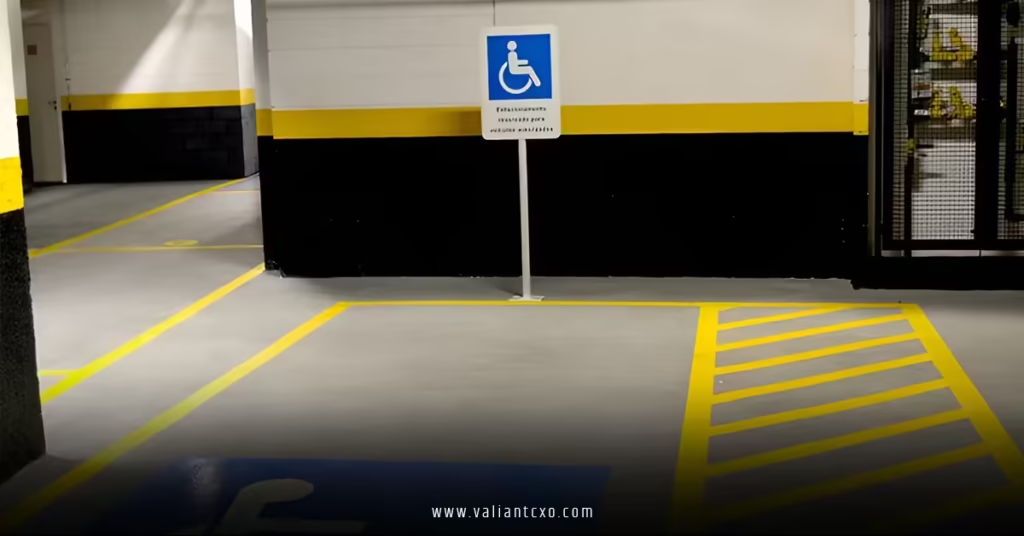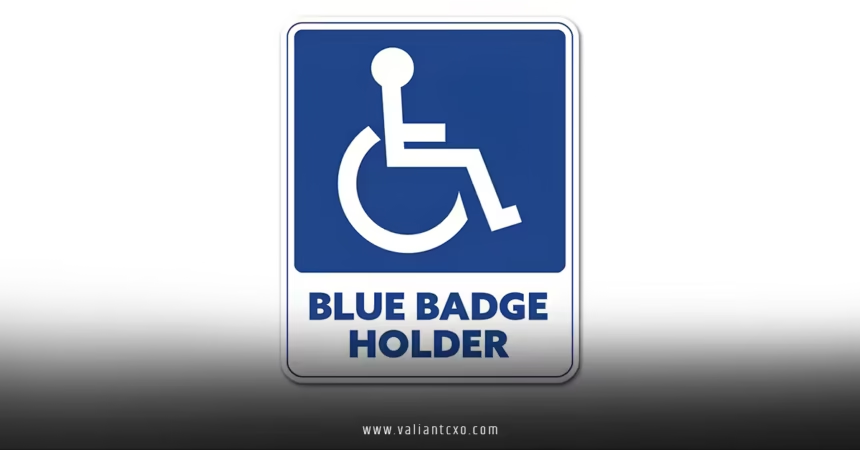Track your Blue Badge application—it’s that simple phrase that can ease the anxiety of waiting for one of the UK’s most vital mobility aids. Imagine this: you’re navigating the chaos of daily life with mobility challenges, and suddenly, the promise of easier parking and less stress hangs in the balance. You’ve submitted your forms, crossed your fingers, and now? You’re left refreshing your email like it’s a lottery ticket. But here’s the good news—I’ve been there, guiding friends through this exact process, and I’m here to walk you through it all. In this deep dive, we’ll unpack everything from eligibility to those nail-biting status checks, ensuring you feel empowered, not overwhelmed. Let’s turn that waiting game into a confident stride.
What Exactly is a Blue Badge, and Why Should You Care About Tracking Yours?
Picture the Blue Badge as your golden ticket to parking freedom in the UK—a small laminated card that packs a punch for anyone facing mobility hurdles. Issued by local councils under the government’s scheme, it lets you park closer to shops, hospitals, or anywhere your day takes you, without the usual fines or frantic circling. But why obsess over how to track your Blue Badge application? Because delays can stretch from weeks to months, and in that time, you’re sidelined from the perks you desperately need. Think of it like tracking a package from Amazon: you wouldn’t just sit back and hope; you’d want real-time updates to plan your life around it.
This scheme isn’t just bureaucracy—it’s a lifeline. Over a million Blue Badges are in circulation across England, Scotland, and Wales, helping folks with disabilities reclaim independence. And with processing times averaging up to 12 weeks, knowing where your application stands prevents unnecessary stress. Ever felt that itch to call your council every day? We’ll show you smarter ways to stay informed without driving yourself (or them) crazy.
The Real-World Perks of Securing Your Badge Quicker
Hold on—before we dive deeper, let’s chat about the wins. With a Blue Badge, you dodge those pesky pay-and-display zones, park on yellow lines (time limits aside), and even get priority at some events. It’s not magic, but it feels like it when you’re juggling doctor’s appointments or family outings. Tracking your Blue Badge application early means you’re one step closer to these freedoms. I once helped a neighbor chase hers; she was zipping to the supermarket in half the time within days of approval. That’s the burst of relief we’re chasing here.
Are You Eligible? Decoding the Rules Before You Even Apply
Ever asked yourself, “Do I qualify for this?” It’s the million-pound question that trips up so many. The Blue Badge isn’t handed out willy-nilly—eligibility hinges on specific criteria set by the Department for Transport. Broadly, it’s for those with severe walking difficulties, visual impairments, or certain medical conditions. But don’t worry; councils assess on a case-by-case basis, often without extra hoops if you tick automatic boxes.
Diving in, automatic eligibility kicks in if you’re receiving benefits like Personal Independence Payment (PIP) with at least 8 points in the mobility component, or higher rate mobility from Disability Living Allowance (DLA). War veterans with specific injuries? You’re in too. It’s like a fast lane for those already proven needy by the system—no extra assessments needed. But if you’re not on those benefits, fear not; you might still qualify if you can’t walk more than 50 meters without severe discomfort, or if arm/leg issues make getting around a nightmare.
Automatic Eligibility: The No-Fuss Fast Track
Let’s break it down simply. If you’re over 2 years old and getting the right benefits, you’re golden. This covers a chunk of applicants—think elderly folks on Attendance Allowance or kids with congenital conditions. Applying here is straightforward, but remember, even automatics need proof. It’s your shortcut to starting the track your Blue Badge application journey without the wait-for-assessment blues.
Subject to Further Assessment: When It’s a Bit More Involved
Now, for the rest of us. If walking’s your kryptonite—say, chronic pain flares up after 20 steps—or you’ve got a progressive illness like Parkinson’s, you’ll need a form plus possibly a doctor’s nod. Councils might chat with you or request more docs. It’s thorough, but fair. Pro tip: Be brutally honest on the form; vagueness can lead to rejections and restarts. And once submitted? That’s when you lean hard into how to track your Blue Badge application to monitor if they’re digging deeper.

Step-by-Step: How to Kick Off Your Blue Badge Application
Alright, eligibility checked? Time to roll up your sleeves. Applying feels daunting at first—like assembling IKEA furniture blindfolded—but break it into bites, and it’s doable. Head to GOV.UK’s Blue Badge page for the official launchpad; most English councils link right there. Scotland and Wales have tweaks, but the core’s the same: online forms rule the day.
You’ll pay £10 in England (free renewals sometimes), and it’s non-refundable, so double-check everything. Upload a fresh photo (no selfies in mirrors, please), your National Insurance number, and proofs galore. It’s digital now, which means faster starts to your track your Blue Badge application saga.
Gathering Your Documents: Don’t Skip This Prep Work
Think of docs as your application’s armor. You need:
- A color photo (passport-style, recent).
- ID proof (passport, driving license).
- Address verification (utility bill).
- Benefit letters if applicable.
Miss one? Expect a ping-back for more, delaying your ability to track your Blue Badge application effectively. I learned this the hard way helping a mate—his blurry pic cost two extra weeks. Pro hack: Scan everything high-res and label files clearly. It’s tedious, but it pays off when you’re glued to the tracker later.
Navigating the Online Application: From Form to Submit
Fire up the portal, select your council, and fill ‘er up. Questions probe your mobility: How far can you walk? Any aids? Be vivid— “I collapse after 30 meters, sweating like I’ve run a marathon” beats bland stats. Submit, pay, and boom: Email with reference number arrives. That’s your golden key to track your Blue Badge application. Save it like your life depends on it (it kinda does for parking peace).
How to Track Your Blue Badge Application Like a Pro
Here’s the meaty bit you’ve been scrolling for: tracking. No national dashboard exists—it’s council-specific, which sounds messy but isn’t. Once submitted, you get an 8-10 digit reference. Use it to log into your local authority’s portal. For Kent folks, it’s Kent County Council’s tracker; Worcestershire has its own slick one. Google “track Blue Badge [your council]” and you’re golden.
Log in weekly (not daily—patience is key), and watch statuses shift from “Received” to “Approved.” It’s empowering, like peeking behind the curtain of a magic show.
Locating That Elusive Application Reference Number
Lost your email? Panic not. Check spam, or ring the council with your name/DOB. Some portals let you search by postcode. Remember, without it, tracking your Blue Badge application is like hunting ghosts. Jot it down, tattoo it—whatever works.
Mastering the Login and Portal Navigation
Portals vary, but basics hold: Username (often email), password (create one), reference. Once in, dashboards show timelines. Oxfordshire’s is user-friendly; log in and voila—progress bar. If stuck, chat support’s there. It’s not rocket science, but first-timers trip on forgotten passwords. Use a password manager, folks.
Interpreting Status Updates: What Does It All Mean?
Statuses are cryptic at first, like weather forecasts. “Submitted”? You’re in queue. “Under Review”? They’re vetting docs—expect 4-6 weeks here. “Assessment Needed”? Brace for a call. “Approved”? Confetti time; badge mails in 1-2 weeks. Denied? Appeal within a month. Tracking your Blue Badge application demystifies this, turning vagueness into visibility.
Submitted Status: The Calm Before the Storm
Fresh off submit? You’re “Submitted.” It means files landed safely. No action needed—just start your track your Blue Badge application routine. Use this breather to plan contingencies, like temporary parking passes from Citizens Advice.
Under Review: When the Wheels Start Turning
This phase is the bulk—councils cross-check with docs or docs. If it’s dragging past 8 weeks, nudge via the portal. I’ve seen reviews fly in 3 weeks with solid proofs; skimpy ones? Months. Keep tabs tight here.
Approved or Denied: The Big Reveal
Approval? Badge en route, valid 3 years. Denied? Reasons emailed—often missing evidence. Appeal pronto. Either way, your diligent track your Blue Badge application efforts paid off with closure.
Troubleshooting: When Tracking Your Blue Badge Application Hits Snags
Life’s not perfect, and neither are portals. Ever clicked “login” and gotten errors? Or stared at a stalled status? You’re not alone. Common pitfalls include tech glitches (clear cache), wrong references, or peak-season backlogs (holidays crush systems).
Handling Processing Delays Without Losing Your Cool
Up to 12 weeks is standard, but outliers hit 20. If overdue, message via portal first—polite persistence wins. Escalate to complaints if ignored. Meanwhile, scout temp solutions like doctor’s notes for parking leniency. It’s frustrating, like waiting for a delayed flight, but tracking keeps you proactive.
Recovering a Forgotten Reference: Quick Fixes
No reference? Email the council with details; they trace it fast. Prevent future woes by printing confirmations. Simple, right? Yet it stumps so many starting to track your Blue Badge application.
Renewing Your Badge: Don’t Let Tracking Slip Here
Badges expire—3 years flies by. Renewal mirrors new apps but skips some proofs if unchanged. Track your Blue Badge application renewal the same way: Reference from renewal submit leads to the portal. Bristol councils let you monitor via GOV.UK. Start 12 weeks early; lapses mean fines. It’s a cycle, but mastering the track keeps you badge-ready.
Pro Tips for Effortless Tracking of Your Blue Badge Application
Want to ace this? Set calendar reminders for checks. Join forums like Age UK’s Blue Badge guide for peer tips. Use apps for notes on statuses. And breathe—most sail through. Treat tracking like a habit, not a chore, and you’ll feel in control.
Imagine zipping into that disabled spot, badge gleaming, all because you stayed on top of the track your Blue Badge application game. We’ve covered the what, who, how, and hurdles—from eligibility deep dives to portal logins and delay dodges. You’re now armed with knowledge that turns waiting into winning. So, hit submit if you haven’t, log in if you have, and reclaim your roads. Your mobility matters—don’t let red tape steal your momentum. What’s your next step? Dive into that portal and watch the magic unfold.
Frequently Asked Questions (FAQs)
1. How long does it typically take to track your Blue Badge application through to approval?
Most track your Blue Badge application statuses update within 12 weeks, but log in weekly to catch shifts early. Delays happen, but persistence pays off.
2. What if I can’t access the portal to track your Blue Badge application?
Contact your council with your details—they’ll guide recovery. Always save your reference to avoid this hiccup when you track your Blue Badge application.
3. Can I track your Blue Badge application if I applied by post instead of online?
Yes, but it’s trickier—call the council for verbal updates. Online apps make tracking your Blue Badge application seamless, so go digital next time.
4. Is there a fee to track your Blue Badge application status?
Nope, tracking your Blue Badge application is free once submitted. The £10 fee is just for the app itself.
5. How often should I check when I track your Blue Badge application?
Weekly’s ideal—daily amps anxiety. Use reminders to keep your track your Blue Badge application routine chill and effective.
Read Also:valiantcxo.com


